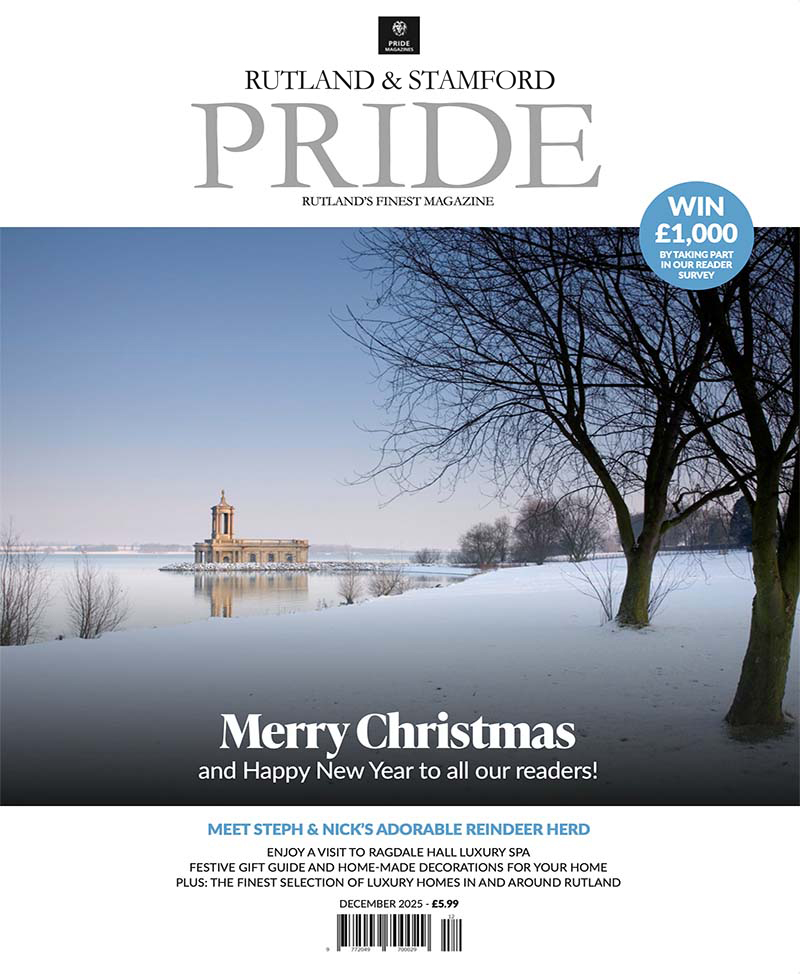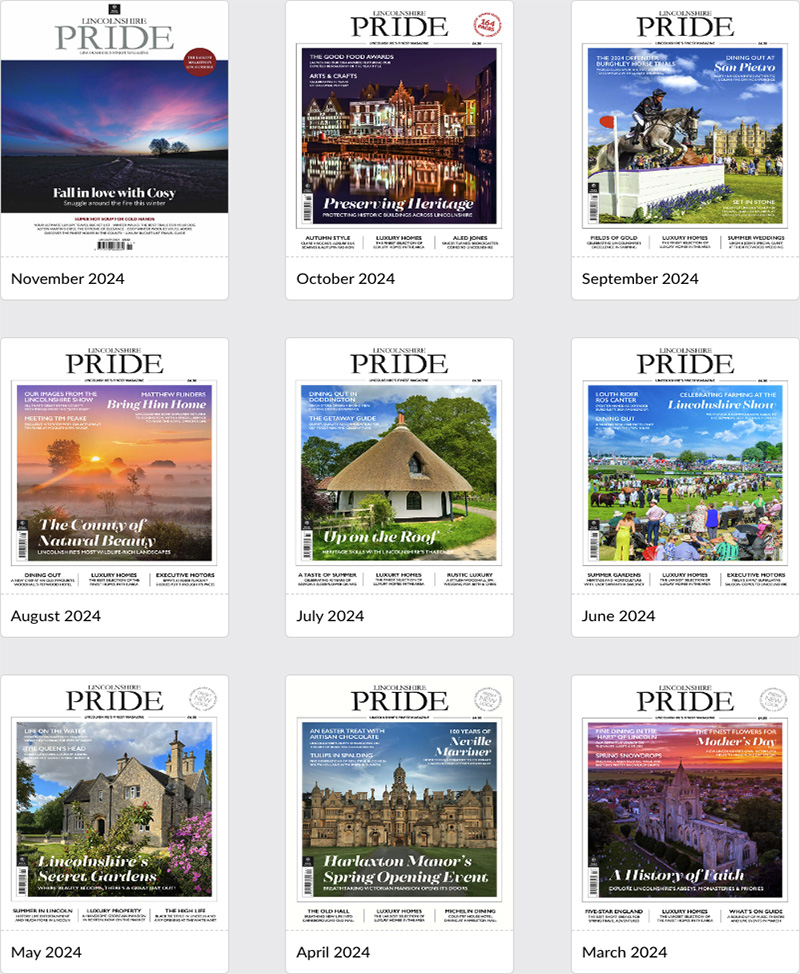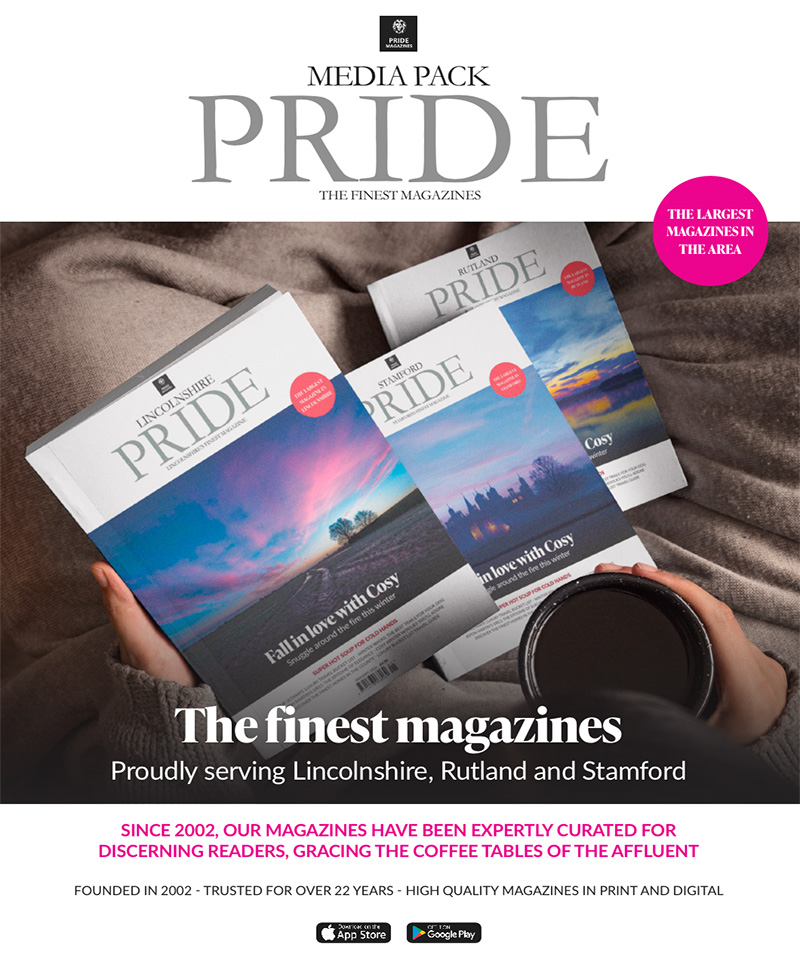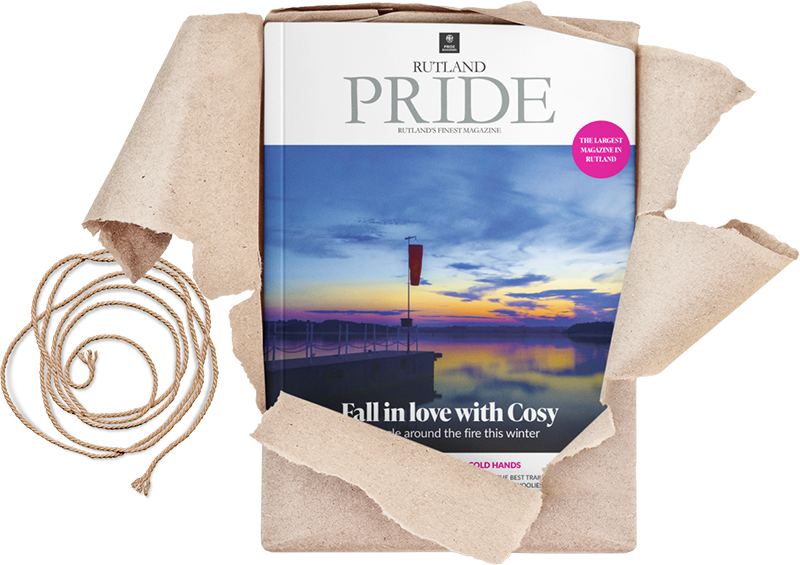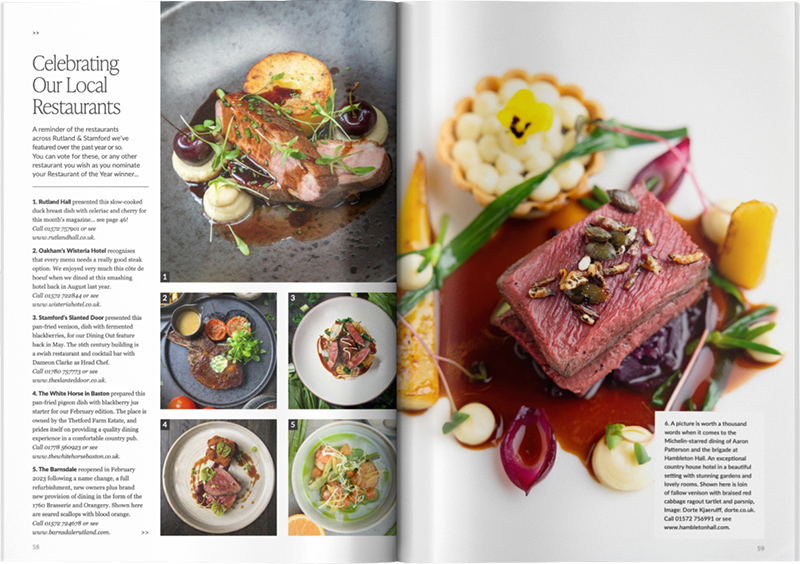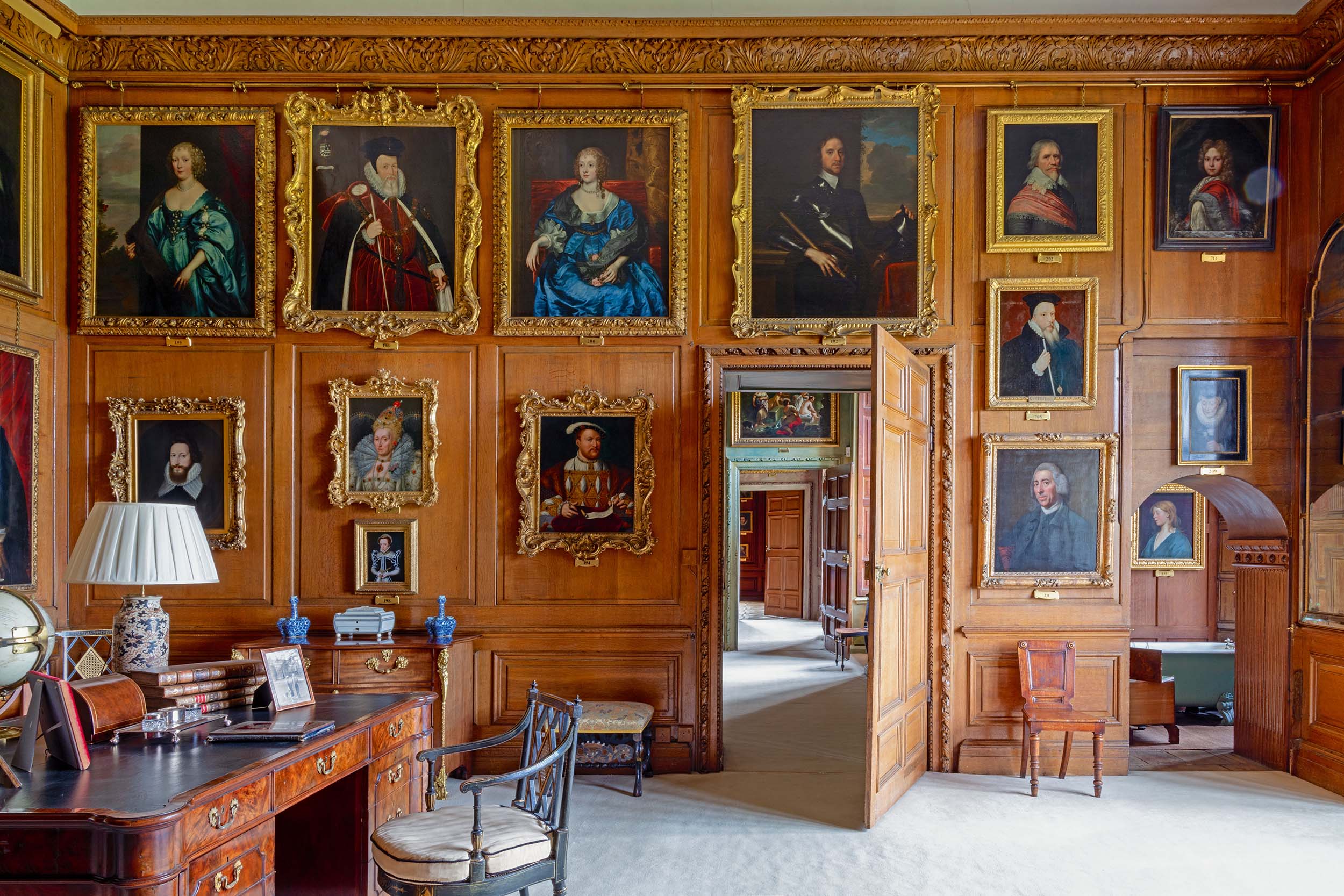
Telling the Story of Burghley
A brand new book telling the story of Burghley House offers a beautifully presented guide to Stamford’s Elizabethan country house. Who better to give the property its voice than historian Dr John Martin Robinson, working alongside photographer Ashley Hicks and Miranda Rock, the property’s Custodian and Executive Chair of Burghley
Undertaking the task of producing a brand new book, comprehensively chronicling the history of Burghley House, is no small matter. It has been more than three decades since the history of the house, the estate and its collections were comprehensively written about. A new, official guide to Burghley will inform future visitors about the rich history of the people and the items that have helped to ensure the house is one of the finest in the country.
“The project was first envisaged a couple of years ago,” said Custodian and Executive Chair Miranda Rock. “We already had an amazing archive, mostly on site at two locations on the estate with some documents in national archives too. Our collections are vast so these days there are many thousands of items, all recorded on a computer-based inventory, from the tiniest of objects to pieces of furniture and paintings.”
“Another advantage of our computerised inventory is that we can make our collections publicly available, so anybody can search our database online – by artist or genre – as you would a national museum.”
“We’re also very lucky to have our own curator Jon Culverhouse whose work, knowledge and expertise covers a huge variety of items in the collection. In the past, too, we’ve benefitted from the advice of a great many experts in their particular specialism.”
“The discoveries that we make now are subtle, but every time somebody comes to Burghley with an interest in a different subject they bring new knowledge and insight.”
“Recently, for example, we hosted a PhD student researching the symbolism of the painted ceilings, which are stories from classical mythology rather than biblical scenes. He brought his expertise in Baroque mural painting from Nuremberg, and his interpretation of the meaning behind the subjects depicted it was fascinating. These kinds of scholarly discoveries continue to happen.”
“In respect of the book then, we were all very receptive to the idea because it’s an important record for Burghley. A lot of information that we’ve known anecdotally or from documents has now been carefully gathered in one place, which is very valuable for us.”
“The project was first envisaged a couple of years ago. One of our trustees, who knew Dr John Martin Robinson well, was particularly interested in seeing it come to fruition. They suggested Rizzoli as our publisher, and the project took off from there.”
“The publisher also engaged Ashley Hicks to take the photographs. It felt like the perfect moment for this dream team to create something really wonderful — and that’s what we’ve achieved.”
Dr John Martin Robinson is an architectural historian who pursued a professional interest in architectural history fifty years ago at the Greater London Council’s Historic Buildings Committee. He engaged in listing work and served as architectural editor of the Survey of London, organising photography and measured drawings.
He then became an inspector of historic buildings for Westminster, contributing to restorations at Spencer House and Covent Garden. After the GLC was abolished he worked briefly for English Heritage before becoming an independent consultant.
In parallel he is an officer of arms involved in state ceremony and a long-standing writer for Country Life since December 1973 (contributing around ten articles a year), as well as librarian to the Duke of Norfolk at Arundel, overseeing archives, conservation and the historic collection.
His education reflects lifelong attachment to buildings from childhood trips with his grandfather to churches and castles, to achieving a first in Medieval History at St Andrews and studying Modern History at Oxford where, under Howard Colvin, he completed a doctorate on eighteenth-century architect Samuel Wyatt. John once considered becoming an architect but, he jokes, ‘counting’s not my forte.’ So, instead, he pursued history keen to set art and architecture within their social, economic and political contexts.
John’s connection with Burghley is deep. He first visited as a schoolboy, hitchhiking in the 1960s, then served for five years as a governor in the early 2000s, helping steer sensitive local projects — restoring the William Cecil hotel and guiding quality-led housing on the former football ground — insisting on the use of local stone, sound proportions, timber joinery and proper landscaping. Though currently based in Lancashire, he still knows the estate intimately.
The new book was conceived as a holistic portrait in which architecture, landscape and collections are treated as one integrated subject. Happily, decades of research already existed, especially through curator Jon Culverhouse and the exemplary house archive. As the author his task, he says, was to curate the vast knowledge already accrued about Burghley House and its collections into a clear, strictly chronological narrative. He places Burghley in its wider world: Lord Burghley’s educated continental connections; the melding of an English medieval plan with Renaissance detail, and the later Baroque remodelling and Italian collection within Stuart politics.
The book’s illustration, meanwhile, has been an undertaking for Ashley Hicks. A renowned British interior designer and author as well as a photographer, Ashley is a second cousin to King Charles III and was the godson of the late Prince Philip, Duke of Edinburgh.
Influenced by his father, the designer David Hicks, Ashley still produces various soft furnishing collections, licensing them to such brands as GP & J Baker and Jo Malone. Additionally, he has served as a contributing editor to Cabana magazine, the biannual interiors and decorative arts journal.
In 2018, having already published seven books on the subject of interior design for period properties, he was commissioned by Rizzoli to write about, and photograph, the state rooms of Buckingham Palace.
Ashley’s work considered the Regency, Victorian and Edwardian influences on the home of the British monarch since 1837, including the contributions of such architects as John Nash and some of the work in the Royal Collection such as works by Rembrandt, Rubens, van Dyck, Vermeer, and Canaletto, which hang in the Picture Gallery.
Burghley House is managed by eight trustees, and Miranda serves as Custodian and Executive Chair of Burghley House, with her husband Orlando, who works at the auction house Christie’s.
It has been, she says, an extraordinary place for the couple’s four children to grow up. “They’re now aged between 17 and 25 years old, and they do take an interest in art and art history,” says Miranda. “It’s hard not to when you live here, growing up in an extraordinary environment surrounded by so much history. I’m not sure it’ll be right for them to take on the role as we have, though. They’re all growing up and doing their own thing, as young people must.”
“Going through the beautiful gates every day and living somewhere so special I think you have to go away and then return to the place to be reminded of the feelings that it can invoke. I think all four children will return to Burghley to visit us after living away from the house and be reminded of what a unique family home it has been. I know that from my own experiences growing up at Burghley.”
“I studied art history at University College London, then worked at the Royal Collection as an assistant curator, which was invaluable experience. After moving to New York, I worked for an art dealer and at the Hispanic Society of America, researching Spanish paintings in their archives.”
“Later I completed an MA in Arts Policy and Administration at Birkbeck. My parents retired in 2007 and the trustees invited members of the wider family to apply for the role of House Director here to succeed them. I’ve been here ever since, and lead the senior team, reporting to the Trustees.”
“We are a team of nearly 200 staff covering everything from conservation and property maintenance, forestry, gardening, the golf club, visitor business and all the estate’s programme of annual events, it’s incredibly varied and no two days are the same.”
“A large part of my role is working with the trustees to determine how we can best direct our resources to preserve the house and wider estate for the future. We set our own quinquennial programme of works with our architect, who visits at least monthly. This forms the basis of our annual budget, focusing on the areas most at risk.”
“The 16th-century limestone of the building presents immense challenges, but we now have a great father and son stonemasonry team and we manage our priorities carefully. There’s an infinite amount of work we could do, but only finite capacity and funds, so it’s closely monitored. We review it every week — it underpins everything.”
“Burghley is a big community. It’s not just us living here; it’s a village in itself, home to many people. We never really rest. We’ve just finished the Horse Trials, and we’re preparing for the Christmas Fair, which has become a huge success.”
“Looking ahead, we’re partnering with Teals to open a new farm shop at Carpenter’s Lodge — a very exciting project focused on sustainability and heritage food products.”
“In recent years we’ve created the adventure playground, and we invest a lot of thought into our programme of exhibitions in order to make the most of our collection and to present it to as many people as possible, especially those who live locally.”
“With amazing prescience, my grandfather David, 6th Marquess of Exeter, created a charity to preserve, in perpetuity, the house, its collections and the surrounding estate, to ensure Burghley remains secure and can continue to be enjoyed by hundreds of thousands of visitors every year. With an emphasis on education, environmental sustainability, and in support of the local community, his ambitions have never felt more relevant.”
“It’s unusual for a house of this type to be located right on the edge of such a beautiful and thriving town, and we all benefit from that. Burghley and Stamford have a symbiotic relationship. We certainly need Stamford, and I think Stamford enjoys Burghley.”
“We’ve been thrilled that already so many Stamford people have expressed interest in the book, keen to give a copy to someone for Christmas, or to keep a copy on their coffee table as a nod to a part of Stamford that many hold in great affection.”
“The books arrived at the end of the summer and officially went on sale on the Monday after the Horse Trials. We had a soft launch during the Horse Trials and it was very well received, which was gratifying. It’s a thing of real quality — very readable and beautifully illustrated.”
“This book is a celebration of each and every generation who has lived at Burghley,” says Miranda in the foreword to the book.
“Some have left an extravagant mark, others have necessarily lived a more prudent tenure, which was equally important. But all of those generations have been instrumental in preserving and embellishing the magical place we see today. The book is a celebration of all the family, staff, trustees, volunteers, visitors, experts, friends and enthusiasts who enable Burghley to continue to flourish. The book is dedicated to them with love and pride.”
Burghley House is a new book published by Rizzoli and written by Dr John Martin Robinson. Available from The Courtyard Shop of Burghley House (including limited signed editions), £60, see www.rizzoliusa.com or www.burghley.co.uk.
The Cecils of Burghley
Burghley House is far more than one of England’s greatest Elizabethan prodigy houses — it is the enduring seat of one of the nation’s most distinguished families. For nearly 460 years, the Cecils have called Burghley home, their lineage intertwining with the story of England itself, from the court of Elizabeth I to the cultural heart of modern Stamford.
The dynasty was founded by William Cecil, the astute and formidable statesman who rose from relatively modest Lincolnshire gentry to become Lord High Treasurer and chief advisor to Elizabeth I. Elevated as the 1st Baron Burghley in 1571, he was the architect of Elizabethan policy and power, steering the nation through religious upheaval and international intrigue. His vision and fortune enabled the creation of Burghley House — an architectural proclamation of status and stability designed to impress monarchs and foreign dignitaries alike.
The Cecils’ political influence endured for generations. Their cadet branch at Hatfield House became the Earls of Salisbury, while the Burghley branch rose to the rank of Earl of Exeter in 1605 and, ultimately, Marquess of Exeter in 1801. This new dignity, conferred upon Henry Cecil, 10th Earl and 1st Marquess of Exeter, marked the family’s transformation from courtiers to grandees of the Georgian aristocracy. He and his successors presided over vast estates, their role shifting from royal advisors to landed statesmen and country patrons.
The 2nd Marquess, Brownlow Cecil, was a prominent Tory politician, while the 3rd Marquess, also Brownlow, represented Stamford in Parliament and served as Lord Chamberlain to Queen Victoria. The 4th Marquess, William Alleyne Cecil, devoted himself to managing the estate through the agricultural downturn of the late 19th century, preserving Burghley at a time when many country houses fell into decline. His son, the 5th Marquess, Brownlow Henry Cecil, carried this custodial spirit into the 20th century, navigating the upheavals of war and social change.
Among the most celebrated was David Cecil, the 6th Marquess of Exeter, who combined aristocratic duty with sporting brilliance: an Olympic gold medallist in the 400m hurdles at the 1928 Amsterdam Games, he brought honour to Britain before embarking on a career in politics and international sport.
As a peer, MP, and senior figure within the International Olympic Committee, he championed athletic endeavour — and, closer to home, founded the world-renowned Burghley Horse Trials in 1961, which has since become a defining fixture of the equestrian calendar and a source of immense local pride.
His son, William Michael Anthony Cecil, succeeded as 7th Marquess in 1981, continuing the family’s commitment to stewardship and public service.
Today, Burghley remains under the ownership of the Cecil family, with its day-to-day management entrusted to Miranda Rock, a direct descendant of the Cecils. Under her stewardship, Burghley balances its dual roles as a thriving cultural attraction and a cherished private home. The unbroken thread of family continuity that makes Burghley unique — a living legacy of the Cecils’ centuries-long commitment to heritage, community, and custodianship.
Ashley Hicks: Photographing Burghley
How did a career creating classical interiors and furniture help with your work photographing Burghley House?
I started taking pictures seriously when I noticed that a lot of interiors photographers were now using digital SLRs, rather than the old medium-format cameras which were so big and expensive, and I bought one for myself and started recording my own projects. That led to being commissioned by Cabana magazine to photograph some historic interiors in Italy, and then by Rizzoli to do a book on the interiors of Buckingham Palace.
What is the appeal of a historic property and its interiors?
I have been fascinated by historic houses since I was a child when I would go with my father (the designer David Hicks), who had been obsessed with them all his life. It’s a passion he passed on to me. Photographing them is a both a joy and a challenge!
What was it like to photograph Buckingham Palace’s interiors?
Rather less easy than somewhere like Burghley, partly because of the understandable security complications but also because I wanted to humanise the vast rooms with acres of empty carpet, which was a bit tough. The great joy was focussing on the details and the collections of objects scattered throughout the rooms. I also wrote the text, with a brief history of the place, which was fascinating to research.
How long did your shoots take at Burghley House and how much work goes into the preparation?
I spent about 10 days photographing the house, spread over several months. I can then fill in any gaps later if I’ve missed something important that the author needs included.
What are the technicalities of photographing a property like Burghley House?
I love using natural light, daylight, for its moody, atmospheric quality. The joy of our digital age is the speed and ease with which you can capture images, and the flexibility of the digital file which makes it possible to create composite images and manipulate light and colour to produce whatever result you need. Shooting in RAW format means that the original conditions are recorded in great depth and can later be adjusted very flexibly.
Any reflection on Burghley’s interiors?
What a house! I have been in love with its romantic, pinnacled silhouette since first glimpsing it on a visit some 40 years ago. It’s a fabulously layered house, with every era represented, but joyful and sweet everywhere you look. A delight.
Any favourite area in which to work?
Very hard to choose but probably Heaven which, let’s face it, you don’t get to photograph every day! The Heaven Room with its wonderfully workmanlike face of artist Antonio Verrio who painted it in 1690 staring out from his self-portrait as one of Vulcan’s forge assistants. I was lucky enough to catch it with sun streaming in through the windows and the great silver wine-cooler sparkling on the carpet. Amazing.
See our full feature in the November edition of Stamford Pride at https://www.pridemagazines.co.uk/stamford/view-magazines?magazine=November-2025


